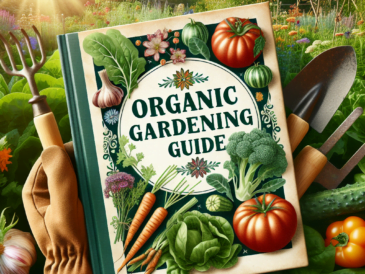Overview of the Philodendron Genus
The Philodendron genus is a diverse group of tropical plants renowned for its rich variety, with species ranging from ornamental vines to the full-fledged shrubbery. Originally hailing from the rainforests in South America and the Caribbean, these plants have adapted to less-than-sunny conditions by developing large, attractive leaves that thrive in shadier spots. This characteristic makes them ideal for sprucing up indoor spaces.
Importance of Philodendron in Indoor Gardening
Philodendrons have carved out a niche in the world of indoor gardening – and for good reason. These leafy beauties aren’t just about looks; they purify the air, making them not only a desirable décor choice but also a wellness ally for any living space. Plus, Philodendrons are somewhat forgiving when it comes to care. A bit of water here, some indirect sunlight there— and you’ve got yourself a lush green companion that keeps your home feeling alive. It’s easy to see why they’ve become a staple in homes far from their tropical origins.
Delving into the diverse world of Philodendrons, one can’t help but be fascinated by their versatility and charm. These plants are a dream for indoor gardeners thanks to their adaptability and vast array of types. Let’s explore some of the most endearing types that plant enthusiasts adore.
A. Heartleaf Philodendron (Philodendron scandens)
A little gem among the foliage fans, the Heartleaf Philodendron, is as lovable as it sounds. Aptly named for its heart-shaped leaves, Philodendron scandens makes for an affectionate addition to any space – literally bringing in ‘hearts’ to your home decor! Easy to care for, this climber thrives with minimal fuss and adds a touch of verdant vibrancy wherever it lays its leaves.
B. Tree Philodendron (Philodendron bipinnatifidum)
Contrary to its climbing cousin, the Tree Philodendron stands tall and proud – embodying the spirit of a tropical tree. Known scientifically as Philodendron bipinnatifidum, this philo’s deeply lobed leaves provide a dramatic flair to any corner it occupies. It’s more than just a pretty face; its air-purifying qualities make it a healthy choice, too! Remember though, it’ll need some room to grow since it’s all about making a statement.
C. Other Popular Philodendron Varieties
There’s no shortage of stars in the philo family, and every single variant brings something special to the table. Enthusiasts might be familiar with the velvety vibes of ‘Velvet Leaf Philodendron’, or perhaps they’ve marveled at the grandeur of ‘Giant Philodendron’. Each type boasts unique features from varied leaf shapes and sizes to intriguing growth patterns. The diversity is simply stunning; there’s sure to be one that captures your heart!
Light Requirements
Philodendron plants thrive in conditions that resemble their native tropical jungle environment—where sunlight is often filtered through the canopy. Bright, indirect light fits the bill perfectly for these foliage favorites, but it’s a balancing act. Too much direct sunlight can scorch their leaves, while insufficient light might lead to lackluster growth and fewer leaves. East-facing windows strike just the right chord, offering a harmonious blend of morning light without the harsh midday sun. Alternatively, a spot near a north or south-facing window is often recommended as an ideal stage to showcase philodendrons’ beauty.
Temperature Preferences
The philodendron isn’t too fussy about temperature—as long as you steer clear of extremes. Cozy warmth suits them best, with temperatures hovering between 65°F and 78°F (18°C to 25°C). However, like Goldilocks’ porridge preferences, they’d rather not deal with anything too cold or too hot. Drafts and sudden temperature fluctuations could throw them off their rhythm, so it’s wise to keep these serene green buddies away from open windows during chilly evenings and the potential blast area of heating or air conditioning units.
Humidity Considerations
Their roots buried deep in the rainforest floor simply underline how much these plants bask in humid conditions; think along the lines of 50-60% humidity—a little more dampness in the air than what most homes usually provide. To create such a moisture-rich ambiance, one could employ a humidifier or place the plant pot on a tray filled with water and pebbles. It’s worth remembering that misting your philodendron might do the trick for a quick fix of humidity but could also pave the way for leaf problems if done excessively.
Moral of the story: Philodendrons don’t ask for much when it comes to their growing conditions—just enough light without direct sun burns, comfortable room temperatures without chilly drafts or excessive dryness, and of course, a touch of humidity to make them truly feel at home.
Choosing the Right Soil Mix
Finding an ideal soil blend for your Philodendron is like hitting the horticultural jackpot – it really sets the stage for flourishing greenery. Opt for a mix that is both aerated and well-draining. Components such as peat, perlite, and pine bark nuggets tick all the boxes, making sure your beloved plant has room to breathe while holding onto just enough moisture to stay hydrated without getting waterlogged.
Selecting Appropriate Containers
When it comes down to picking out a new home for your Philodendron, you don’t want to mess around. Go for pots with drainage holes; trust me, it’s a simple yet non-negotiable feature that keeps root rot at bay. Size matters too! A tad larger than the current pot is best when upsizing – we’re aiming for comfort, not swimming in space. Material-wise, plastic pots retain moisture longer while terra cotta’s porous nature helps wick away extra wetness – weigh the pros and cons according to your watering habits.
The Process of Potting and Repotting
Layin’ down roots takes on a whole new meaning with Philodendrons. Here’s a nifty guideline for repotting these leafy beauties:
A little Prep Work
First things first, let’s set up shop! Gather all your supplies – we’re talking fresh soil mix, a container (that perfectly picked pot), and maybe some gloves if you’d rather not get down and dirty.
Potting Like a Pro
Now let’s roll up our sleeves – it’s time for some potting action. Ease your Philodendron out of its current digs gently; we’re handling delicate living goods here. Loosen any compacted roots with care – think spa day rather than boot camp aerobics. Then introduce it into its spiffy new pot that was a step-up but not enormous leap from its previous one.
All About That Repotting Rhythm
At this point, consider yourself in repotting rhythm! Fill in around the plant with your premium soil mix, tamping slightly as you go to avoid pesky air gaps without compressing so much you cut off air flow—kind of like fluffing a pillow; firm but not flat. Now give it a good drink of water and settle those roots with even more ease.
In conclusion, strike a balance when selecting and preparing for your Philodendron’s environment; attention to detail will pay off big time when those lush leaves start to thrive. It may seem straightforward at first glance, yet these fine points are essential steps toward achieving peak plant happiness.
Philodendron Plant Care Essentials
Nailing the right watering schedule and techniques is key to thriving Philodendrons. Generally, these plants prefer soil that’s, let’s say, on the damp side—but not soaked. You should give them a drink every once in a bit – perhaps every 1 to 2 weeks, letting the top inch of soil dry out between waterings. But hold your horses; it’s not a one-size-fits-all scenario. Factors like humidity, light levels, and even the season can twist the ideal watering frequency. And if you’re opting for a method, believe it or not, bottom watering reduces risks of leaf diseases and over-watering—but don’t leave ’em sitting in H2O for too long!
Nourishment Necessities: Fertilizing Your Philodendron
You’ve got to feed these beauties too if you’re looking for optimal growth. A balanced liquid fertilizer will do wonders every month during spring and summer; fall and winter? Not so much—they’re chillin’ then. Just remember, more food isn’t always better—a case of “less is more” is quite apt here because too much can seriously bum your plant out.
The Trim Factor: Pruning and Maintenance Tips
Kicking off with pruning and maintenance tips, keep an eye out for any leaves throwing off some serious SOS vibes—yellowing, damaged, or just straight-up dead foliage. They gotta go. It’ll make your Philo look spiffy plus prevent potential health probs that could spread like wildfire. Besides cutting away despair, snipping stimulates growth—so go ahead and pinch or trim stems now and then to encourage fullness.
No doubt maintaining a Philodendron calls for paying attention but chucking in some tender loving care – they’d be sprouting jubilantly in no time! Always strive for balance in caring habits, though; overzealousness in any direction can lead you down quite the slippery slope.
Growing new Philodendron plants from an existing one is no rocket science; in fact, it’s quite a straightforward process. Whether you’re a seasoned plant parent or you’ve just dipped your toes in the world of houseplants, there are a couple of methods you can use to multiply your green buddies.
A. Propagation through stem cuttings
Taking the leap with stem cuttings is probably the most popular route to propagate these leafy lovelies. All it takes is snipping off a little bit of the parent plant—look for a section with at least two nodes (those knobby bits where leaves and roots sprout), and you’re good to go! Chuck that cutting in some water, making sure at least one node is submerged—that’s where the roots will come bursting out before long. Once those roots are about an inch or so, it’s time to move your fledgling plant into soil so it can really spread its roots and grow.
B. Root division methods
If you’re more of a “divide and conquer” type, look no further than the root division tactic for boosting your Philodendron numbers. Gently tug the mother plant from her pot when she’s matured enough—usually during repotting—and carefully part ways with her entwined roots to create new individulal youngsters. The trick is to keep each severed piece feeling robust, with plenty of roots and shoots intact for their new beginning in fresh soil.
C. Tips for successful propagation
Success in propagation isn’t just luck—it’s also about finesse. Ensuring your tools are spotless avoids introducing any unwelcome microbes to fresh cuts. Similarly, choosing the right medium—whether water or soil—can be pivotal; water offers a clear view of progress but can be tricky when transferring to soil later on. Speaking of soil, mixing up a well-draining concoction poises your plants for prosperity. Steadfastly monitor moisture levels since overwatering spells disaster, but then again, letting them dry out turns into an equally sad tale. Not too much sun, not too little—these green guys covet a Goldilocks-esque balance of light. Lastly, patience my dear friend; nature can’t be hurried along!
A. Identifying common pests
When it comes to the green world of Philodendron plants, keep an eye out for a few pesky critters that might want to hitch a ride on these leafy friends. Spider mites are one culprit, tiny enough to be almost invisible yet with an appetite for your plant’s vital juices. Mealybugs, resembling miniature tufts of cotton, can cluster in the nooks and crannies of leaves and stems. Don’t overlook aphids; these little sap-suckers love to throw a garden party at your plant’s expense. Lastly, scale insects may look harmless, blending in as small bumps on your plant, but don’t let their appearance fool you – they’re up to no good!
B. Disease prevention and treatment
To stop diseases from knocking on your Philodendron’s door, cleanliness is next to godliness! Ensure its surroundings are tidy; it’ll make a difference—a big one. When you water these plants, aim for their soil rather than overhead splashing, preventing leaf blight and other issues related to excessive moisture. Be mindful of the quantities—overwatering can invite root rot! If things go south despite your best efforts, remove any affected parts pronto to prevent spreading and then treat with appropriate fungicides or bactericides. A stitch in time saves nine here.
C. Non-toxic pest control methods
A non-toxic approach to evicting unwanted six-legged tenants includes the tried-and-true method of blasting them with water—the old ‘spray away’ technique works wonders sometimes! Neem oil is another avenue, doubling as a preventative measure; think of it as a welcome mat stating “Pests Need Not Apply.” Insecticidal soaps can assist in showing these bugs the way out without harming your green buddy as well. And why not recruit nature’s tiny helpers? Introducing ladybugs or lacewings into your garden acts as a natural pest control service; they don’t charge much except for room and board on your lovely Philodendrons.
Yellowing Leaves and Other Common Issues
Running into a spot of bother with your philodendron? Don’t fret! Yellow leaves often wave a flag signaling all’s not well. Be mindful; this could be due to a wide array of factors, including age — it’s natural for old leaves to say goodbye with a yellow tint. However, if you’re noticing a young’un turning yellowish, it might be yelling out about overwatering, poor drainage, insufficient light, or even a nutritional deficiency. You see, philodendrons are quite the drama queens when they’re not feeling up to snuff.
Overwatering and Underwatering Symptoms
When you lavish too much H2O on these leafy pals, they’re likely to kick up a fuss by dropping leaves like hot potatoes. The roots need a breather now and then; otherwise, they end up practically drowning. Keep an eye out for wilting or soft spots – clear signs you’ve been overzealous with the watering can. On the flip side, underwatering has its own telltale indications such as droopy leaves that perk up shortly after drinking time and brown leaf edges which scream out “I need water!”. It’s all about finding that Goldilocks ‘just right’ amount of water.
Solutions to Improve Plant Health
To set things right, begin by nixing any excess water in the saucer – roots sitting in a pool can spell disaster. Make sure there’s top-notch drainage and consider the environment: is it sweltering hot or cooler than usual? Adjust the H20 accordingly. For an under-hydrated philodendron, commence regular watering but don’t go overboard- slow and steady wins the race here. Including a good quality fertilizer can do wonders since these plants are rather fond of their greens – nutrients-wise, that is. Lastly, give them a good light source without going full desert sun on them; indirect bright light will do the trick just fine.
Creative Placement Ideas
Adding a touch of greenery with a philodendron can breathe life into any room, but it’s not just about placing the plant on a windowsill. One could suspend their verdant friend in a hanging basket, providing a cascade of leaves that adds vertical interest to the space. Or perhaps consider nestling your potted companion on a floating shelf or within a bookcase, where its foliage can provide a pop of natural color amid books and trinkets. Even unconventional spots like atop refrigerators or kitchen cabinets can offer unexpected yet delightful hints of green, so don’t shy away from getting creative with your plant placement!
Complementary Plants for Grouping
Grouping plants together is more than just throwing different species into a huddle; it’s about creating aesthetic harmony. Companion plants that pair well with the easy-going philodendron include crisp ferns and the delicate spider plant, both contribute contrasting textures that enhance visual interest. Streaming ivy also makes an excellent cohort, as it intertwines elegantly with the sturdy leaves of the philodendron. These pairings help to form a cohesive indoor garden that’s pleasing to the eye while promoting healthier growth through shared microclimates.
Philodendron in Home Decor
In terms of interior decor, incorporating philodendrons is akin to adding organic artwork—it’s simply transformative! Picking a planter that resonates with your home’s style can be quite fun; imagine a sleek geometric pot for modern spaces or perhaps something rustic for more earthy ambiance. With such versatility, you can easily drape or arrange the heart-shaped leaves around mirrors or artwork as nature’s own frame—cozying up even the most sterile environments. Don’t forget to let your phildendron mingle on side tables or as part of a larger centerpiece display to inject some lush vitality into your living quarters without going overboard.
Keep in mind that while variety may be the spice of life, don’t crowd too many elements together—sometimes less really is more. With these tips, you’ll find your space feeling a little fresher and more inviting in no time—and there’s nothing cliché about that!
A. Tactics for Cultivating Larger Specimens
Caring for mature philodendrons requires a little bit of know-how to ensure they not only survive but thrive. To begin with, repotting is essential. Once every two or three years should suffice; however, the larger your plant gets, the less frequently you’ll need to switch out its pot. The rule of thumb here is to repot before root overcrowding ensues or right when they start peeking out the drainage holes. Your choice of soil should be porous – a mix rich in organic material works



